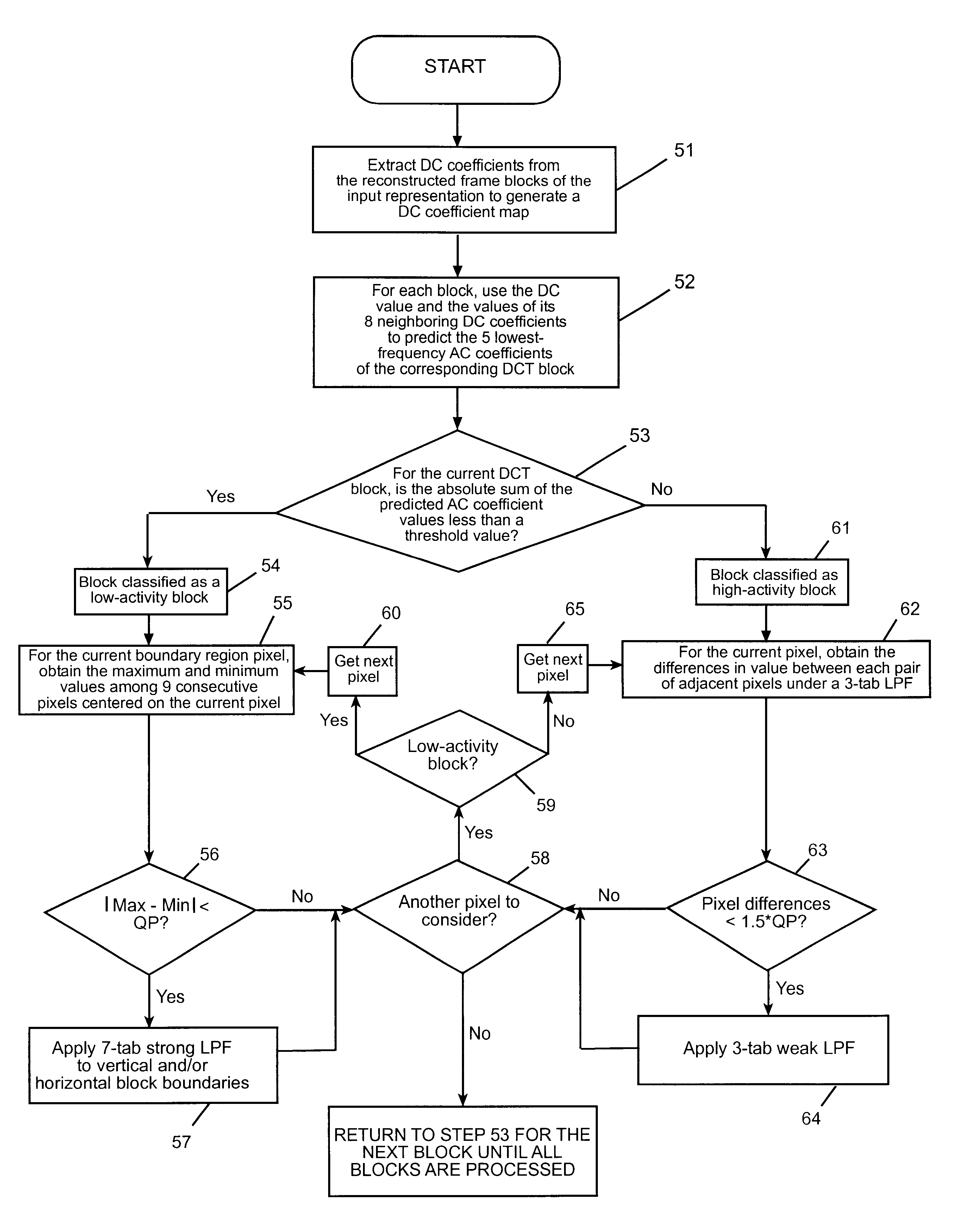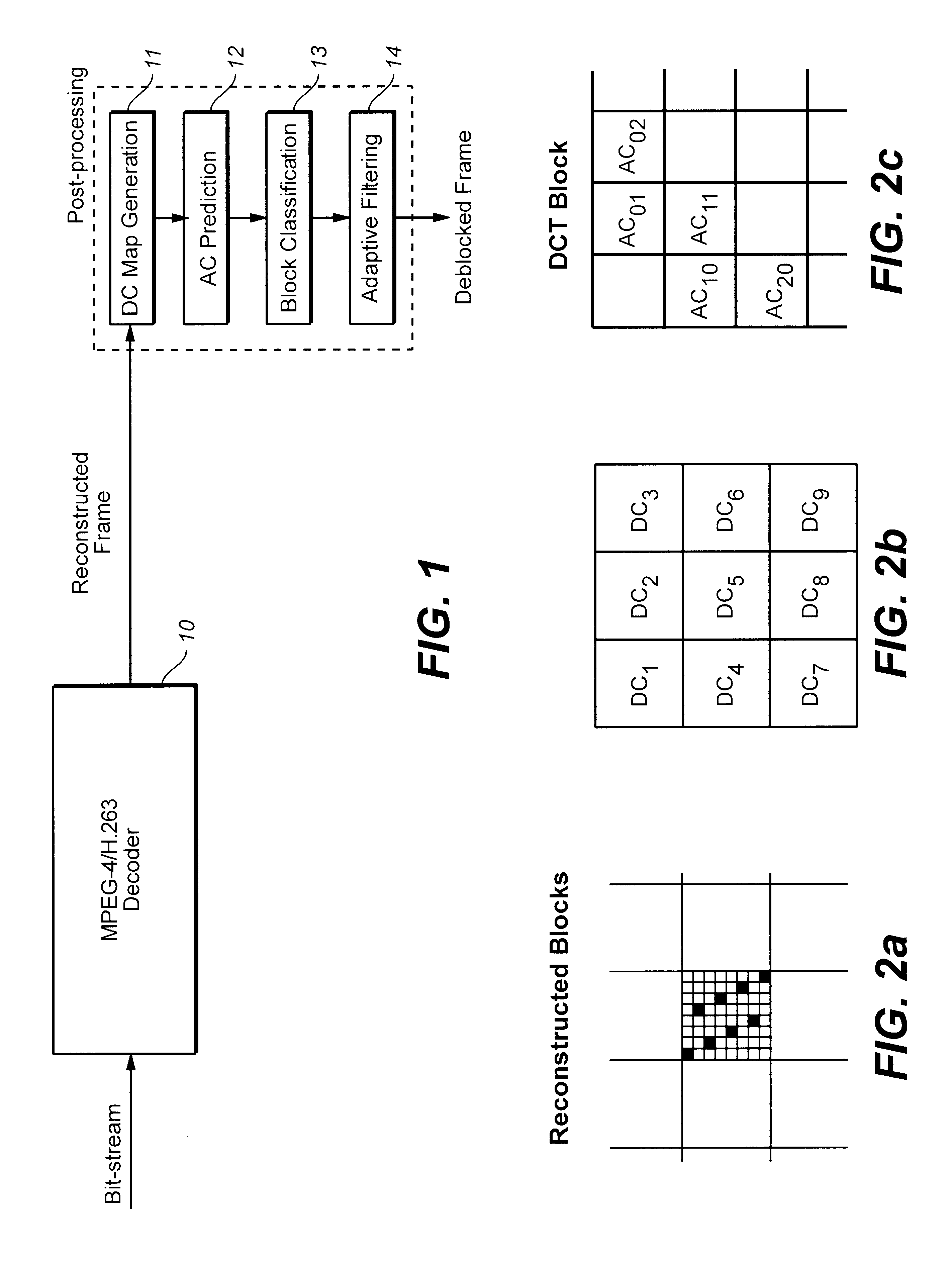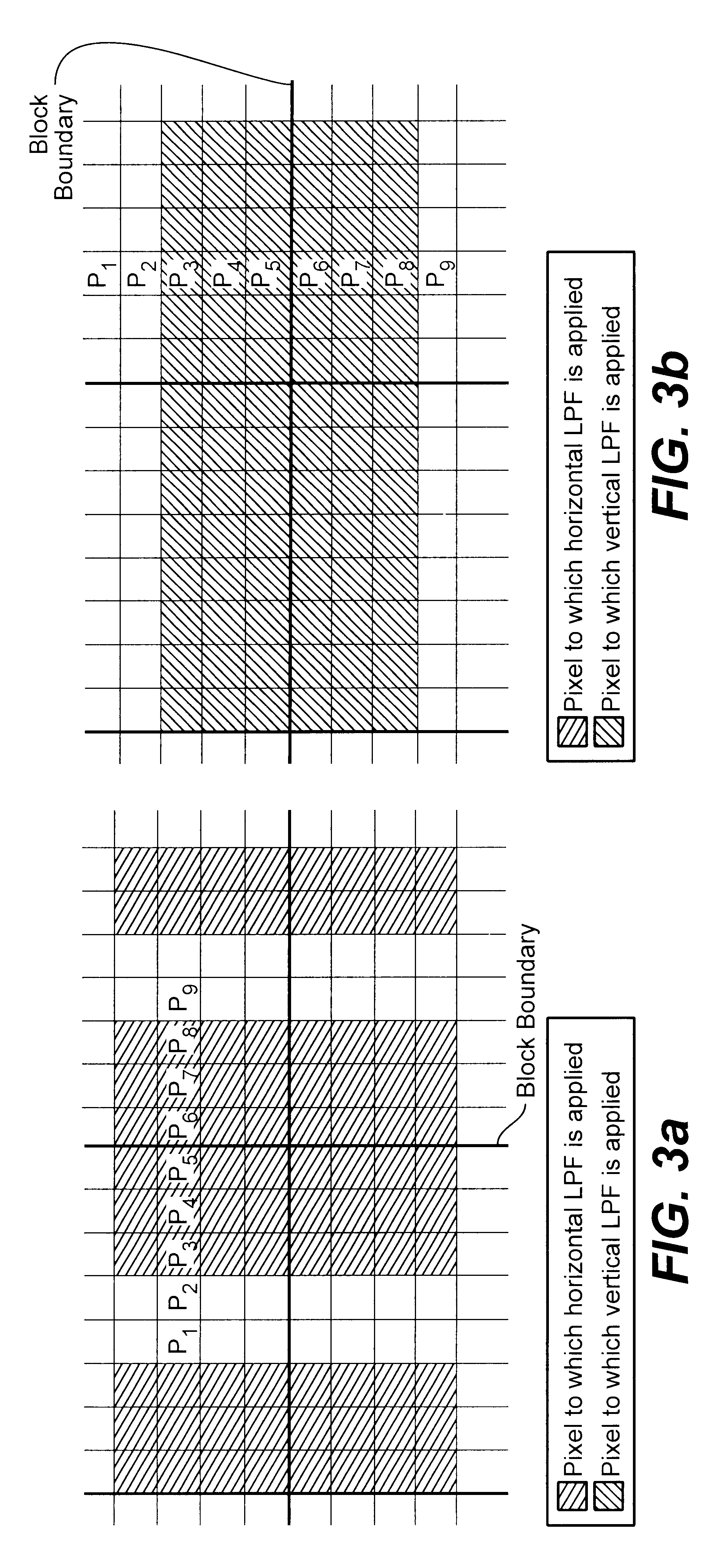Reducing blocking and ringing artifacts in low-bit-rate coding
a low-bitrate coding and artifact technology, applied in the field of reducing blocking and ringing artifacts in low-bitrate coding, can solve the problems of blocking artifacts, decompressed images that exhibit artificial discontinuities, and visual annoying noise near real edges, and achieves reduced computational complexity, high speed, and reduced blocking and ringing artifacts.
- Summary
- Abstract
- Description
- Claims
- Application Information
AI Technical Summary
Benefits of technology
Problems solved by technology
Method used
Image
Examples
Embodiment Construction
A. Overview
[0031]The present invention provides a technique (e.g., an algorithm) to reduce blocking and ringing artifacts in low bit-rate block-based coding, and is particularly applicable to such video coding. Generally, for each reconstructed frame block (i.e., a pixel block), the algorithm estimates its DC frequency coefficient and predicts certain AC frequency coefficients, classifies each block based on the predicted AC coefficients, and adaptively filters select block regions based on the block classification to reduce blocking and ringing artifacts. As illustrated in FIG. 1, the technique is applied to each reconstructed frame output from a decoder 10.
[0032]First a map of the DC frequency coefficients is generated (block 11). The DC value of each reconstructed block in the map is determined by sampling the pixel values at 8 out of 64 locations in the block. From this DC coefficient map, each DC value and the eight surrounding DC values in the map are exploited to predict the ...
PUM
 Login to View More
Login to View More Abstract
Description
Claims
Application Information
 Login to View More
Login to View More - R&D
- Intellectual Property
- Life Sciences
- Materials
- Tech Scout
- Unparalleled Data Quality
- Higher Quality Content
- 60% Fewer Hallucinations
Browse by: Latest US Patents, China's latest patents, Technical Efficacy Thesaurus, Application Domain, Technology Topic, Popular Technical Reports.
© 2025 PatSnap. All rights reserved.Legal|Privacy policy|Modern Slavery Act Transparency Statement|Sitemap|About US| Contact US: help@patsnap.com



